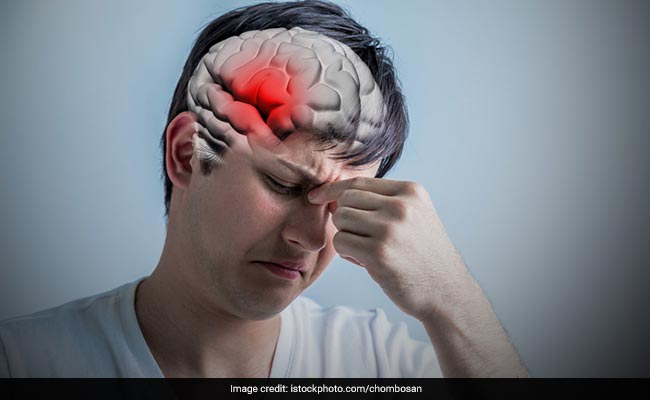Stroke risk factors: Poor lifestyle and adoption of unhealthy habits like lack of physical exercise, smoking and excessive alcohol consumption increase the risk of stroke in younger generation too.

Lack of physical activity affects your health in various ways
HIGHLIGHTS
- A stroke is a medical emergency
- Several health conditions can increase the risk of a stroke
- Exercise regularly to beat the risk of stroke
India is currently dealing with a huge burden of both communicable and non-communicable diseases. Stroke is one of the leading causes of morbidity and mortality in India. Stroke is a serious medical condition that requires immediate medical attention and treatment. It is a kind of brain injury caused by blockage of blood flow to the brain thereby gradually destroying the brain cells and in some cases can result in bleeding as well.
As per the health experts, the lifetime risk of stroke increases after the age of 55. But these days due to poor lifestyle and adoption of unhealthy habits like lack of physical exercise, smoking and excessive alcohol consumption, stroke cases are reported in the younger generation of the country as well. Due to increased stress as well as rising incidences of diabetes and hypertension, there is a sudden shift in the age bracket of developing lifestyle ailments.
According to the recent study conducted by University of North California, Indians developed ischemic stroke at a younger age in comparison to participants from other developed countries. Apart from the common factors poor eating habits, alcohol and smoking, high prevalence of physical inactivity among the Indian group was the major contributing factor.
Regular Exercise - An important aspect of stroke prevention
Regular exercise not only helps in maintaining overall health but also keeps a list full of diseases at bay. Other major ailments that may lead to a higher risk of stroke include hypertension, diabetes and high cholesterol levels.
Hypertension is one of the biggest risk factors for stroke, attributing to over 50% of ischemic strokes (due to blockage) and increasing the chances of hemorrhagic stroke (bleeding in the brain). Thus, regular exercise helps in maintaining the blood pressure levels, thereby reducing the risk for brain stroke by up to 80%.
Also read: Symptoms of stroke

Uncontrolled high blood pressure can contribute to a higher risk of stroke
Photo Credit: iStock
In diabetics, increased blood sugar levels damage all the major blood vessels providing a gateway for the onset of ischemic stroke. Regular exercise not only helps in controlling the blood glucose levels but also curbs down the chances of developing a stroke attack in diabetics.
A high cholesterol level in the body is another factor. With increased levels of LDL(bad cholesterol) the risk for plaque builds up also increases causing atherosclerosis. This makes them prone to losing the integrity of their lining leading to formation of clots, which in turn can prevent blood flow and leads to a stroke. Lack of physical exercise leads to major complications and can have a devastating effect on the vascular system of the brain as well. Following regular exercise pattern and a balanced diet, one can maintain the ratio of good cholesterol in the body.
Also read: Higher Intake Of Fruits, Vegetables And Dairy Products Can Reduce Stroke Risk
Intensity level of exercises
Start slowly and gradually develop your exercise schedule. Muscle and bone-strengthening exercises can also be performed but these should be complementary to aerobic exercises like brisk walking, cycling, etc.

Regular exercise can help you control stroke risk
Photo Credit: iStock
Moderate-intensity exercises can be done but it is always advisable to consult your physician before starting an exercise program. Low-intensity exercise if done regularly has long term benefits and helps in controlling the risk for heart disease that may lead to stroke in future. Low-intensity exercises include walking, stretching, yoga and household work.
Also read: Too Many People Unnecessarily Die From Stroke
(Dr. Vipul Gupta, Director- Neurointervention, Agrim Institute of Neuro Sciences, Artemis Hospital, Gurugram)
Disclaimer: The opinions expressed within this article are the personal opinions of the author. NDTV is not responsible for the accuracy, completeness, suitability, or validity of any information on this article. All information is provided on an as-is basis. The information, facts or opinions appearing in the article do not reflect the views of NDTV and NDTV does not assume any responsibility or liability for the same.
DoctorNDTV is the one stop site for all your health needs providing the most credible health information, health news and tips with expert advice on healthy living, diet plans, informative videos etc. You can get the most relevant and accurate info you need about health problems like diabetes, cancer, pregnancy, HIV and AIDS, weight loss and many other lifestyle diseases. We have a panel of over 350 experts who help us develop content by giving their valuable inputs and bringing to us the latest in the world of healthcare.














